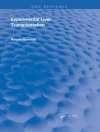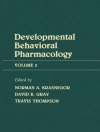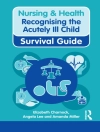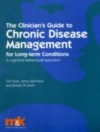This book presents an in-depth guide to transcatheter arterialization of the deep veins (TADV). TADV or deep venous arterialization (DVA) is an emerging technological and clinical solution for patients with peripheral artery disease who have no options for limb salvage based on conventional vascular techniques. It serves to salvage limbs in patients who would otherwise be amputated. For TADV to be successful in preventing amputation patient selection, pre-procedure imaging, technical expertise, and post-operative wound management must be optimized. The book takes a step-by-step approach to TADV to guide the clinical team through the patient journey from meeting a potential candidate for TADV through to saving the leg. Chapters provide a reference for patient selection, procedural steps, and post-operative wound care management. This is an ideal guide for vascular surgeons, interventional radiologists, interventional cardiologists, trainees, and all medical professionals caring for patients with severe peripheral artery disease potentially facing amputation.
สารบัญ
Introduction: What is Deep Venous Arterialization (DVA): Past, Present, Future.- Section I: Patient Selection.- Chapter 1: Selecting the right patient candidate for DVA (clinical examination, imaging, wound location).- Chapter 2: Evaluating the Angiogram.- Chapter 3: Explaining DVA to the patient and family: Managing expectation.- Chapter 4: How to keep the wound stable till surgery.- Section II: Patient Preparation.- Chapter 4: Pedal Mapping (Duplex) and Evaluation of the Venous Anatomy of the Foot – how to do it and what am I looking for?.- Chapter 5: Preoperative optimization of the patient: cardiac, respiratory, wound stability.- Section III: Procedure and Acute Post-operative Care.- Chapter 6: Overview of the Procedure and list of required equipment.- Chapter 7: Venous pedal access: tips, tricks, and technique.- Chapter 8: Arterial to Venous Crossing: tips, tricks and techniques.- Chapter 9: Classic perils and pitfalls with bailout strategies.- Chapter 10: Immediate Post operative Care: Pain management, Swelling Management, Offloading, Wound Care.- Chapter 11: Planning for Successful discharge: What does the DVA patient need to ensure success in the home or rehab: Antibiotic plan, wound management plan, mobility plan, medical management (anticoagulation and diabetic), and follow up.- Section IV: Maintenance of the DVA Circuit.- Chapter 12: Imaging of the DVA circuit: who, what, where, when, and why?.- Chapter 13: When do we need to re-intervene to maintain patency of the circuit?.- Chapter 14: What intervention strategies will be required to maintain the circuit and how do we know it’s working!.- Section V: Wound Care.- Chapter 15: What is the goal of wound care in the DVA patient post procedure?.- Chapter 16: How to Approach Wound Care to Keep the Wound Stable.- Chapter 17: Effective strategies to minimize debridement or disturbance to the wound bed.- Chapter 18: What types of surgical procedures may be performed and when are they appropriate post DVA (toe& foot amputation versus debridement).- Chapter 19: When is the DVA mature enough for a transmetarasal amputation?.- Chapter 20: How to perform the perfect DVA Transmetarasal amputation: Tips, tricks and technique.- Chapter 21: Post operative care from a foot amputation or debridement: offloading and follow up.- Section VI: Life after a successful DVA.- Chapter 22: when can the patient walk again?.- Chapter 24: Prosthetics to ensure balance, function, and no more wounds!.- Chapter 25: Long term DVA follow up and outcomes.
เกี่ยวกับผู้แต่ง
Dr. Anahita Dua is an Assistant Professor at Harvard Medical School and a vascular surgeon at the Massachusetts General Hospital. She is the director of the vascular lab, co-director of the peripheral artery disease center, associate director of the wound care program, and director of the lymphedema center. She specializes in advanced endovascular and open techniques for the care of patients with peripheral arterial disease (PAD), diabetic limb disease, aortic disease, carotid disease, thoracic outlet syndrome (TOS), and venous disease. She completed her vascular surgery fellowship at Stanford Hospital, General Surgery residency at the Medical College of Wisconsin and medical school in the United Kingdom. She also has completed a masters degree in trauma sciences, an MBA in Healthcare Management, a certificate in health economics and outcomes research as well as a certificate in drug and device development from MIT. She is nationally certified in advanced wound care and management. Dr. Dua has published over 127 peer reviewed papers and has edited four vascular surgery medical textbooks. She serves on multiple national vascular surgery committees through the Society for Vascular Surgery and other vascular organizations. She is also the director of the Clinical Approach to Vascular Ultrasound Harvard Course.












